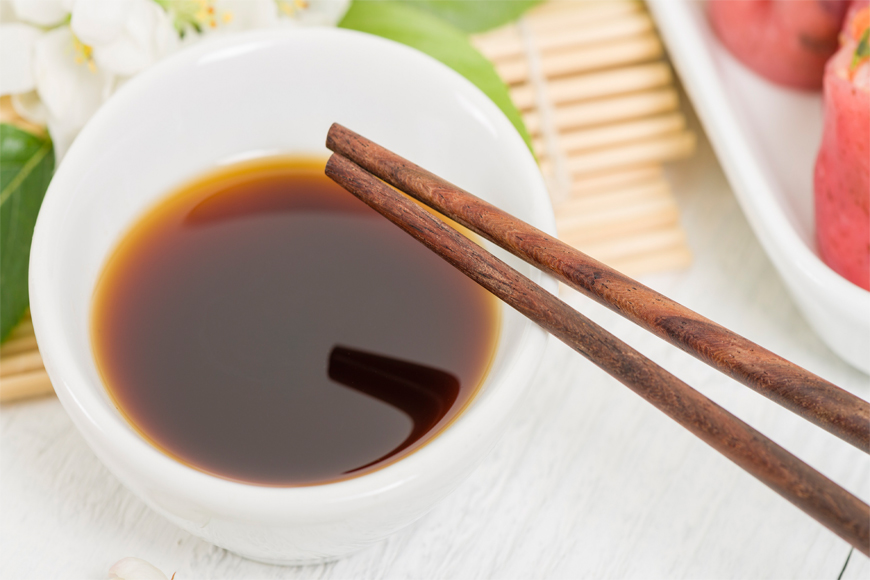6 Alternatives If You Want To Avoid The High Salt Levels Of Soy Sauce
Because obviously you still need something to dip your sushi in.
16 December 2018
Lara

Many dishes would be incomplete without soy sauce...
But who on earth would eat a stir-fry without dousing it in the good stuff?
Unfortunately, new research brings bad tidings - a single tablespoon of average soy sauce contains 61% of our recommended daily salt intake.
Let that sink in for a moment – chances are you don’t use just a tablespoon, but rather glugs of sauce when cooking and eating.
It’s worth noting there is a huge range between types of soy sauce; some might be packed full of sodium, whereas others are a better bet.
Too much salt can raise your blood pressure, which can, in turn, increases your risk of stroke and heart and kidney disease.
With this in mind, here are some alternatives to try if you still want the soy sauce taste without all the sodium.
1. Reduced-salt soy sauce
Okay, this one’s a bit of a no-brainer, but still worth repeating.
Most supermarkets stock low-sodium versions of soy sauce, which obviously are a better choice than the bottles which are extremely high in salt.
2. Make your own
If you make your own soy sauce, it will still obviously contain salt (otherwise it wouldn’t taste like the real deal at all), but you’ll be able to strictly monitor how much you put in.
Sure, it’s much more of a hassle than just popping down the shops, but you’ll feel much more of a sense of pride when you’ve done it.
All you need are soybeans, wheat, salt, water and the special fungus which encourages fermentation.
3. Tamari
Soy sauce is Chinese in origin, and tamari is essentially the Japanese version of it.
It can be used in many of the same ways, but as it isn’t as salty you can be a bit more liberal with how you use it.
Most bottles of tamari are gluten-free, something the soy version tends not to be.
4. Worcestershire sauce
You might have Worcestershire sauce in your cupboard for Welsh rarebit or Bloody Mary-related emergencies, but if you mix it with a bit of water, it replicates the umami and salty taste of soy sauce.
It has a long list of ingredients including barley vinegar, molasses and anchovies – meaning it’s not suitable for vegetarians or vegans.
5. Maggi sauce
If you haven’t yet been exposed to the to the magic of Maggi liquid seasoning, now’s the time to change your ways.
You may have come across Maggi products before, but this is the one that launched the whole empire.
It has the same look and consistency of soy or Worcestershire sauce, and a few of the strong drops can be used to season any kind of dish.
The main ingredient is the confusing-sounding hydrolysed vegetable protein, but you’ll just have to take our word for it and try it yourself to see what it tastes like. It’s similar in flavour to soy sauce, without the soy or as much salt.
6. Coconut aminos
Coconut aminos might not sound particularly tasty, but it’s actually a solid substitute for soy sauce because it’s both rich and salty.
Made from coconut sap, it’s soy and gluten free so is a good option for people with intolerances.
It’s also high in amino acids (which you probably could have guessed) – the building blocks of protein.














